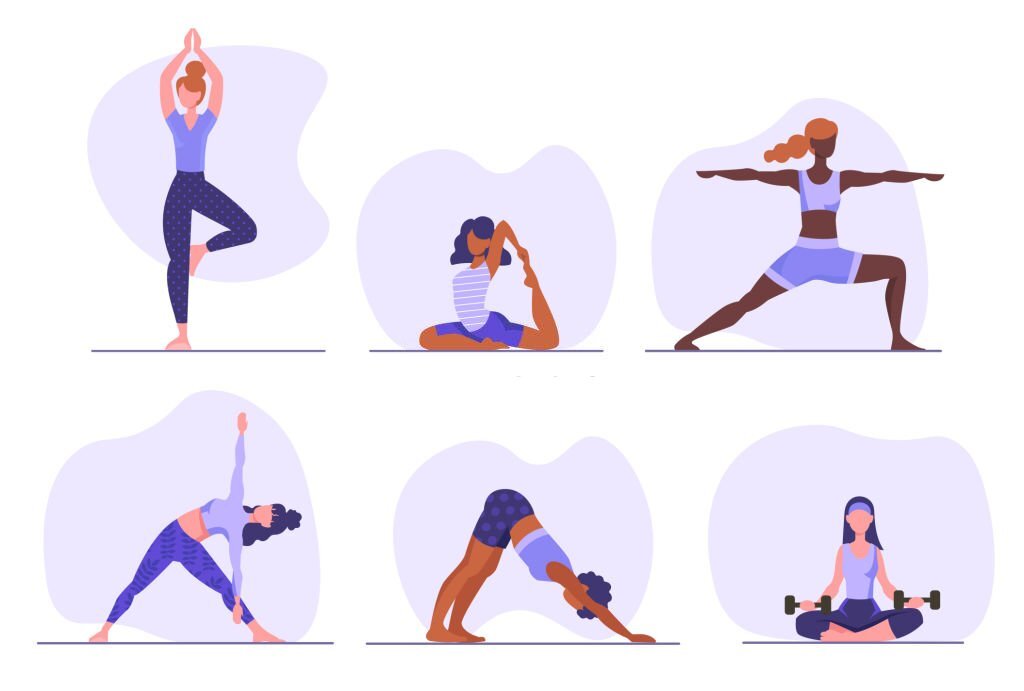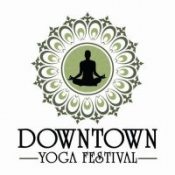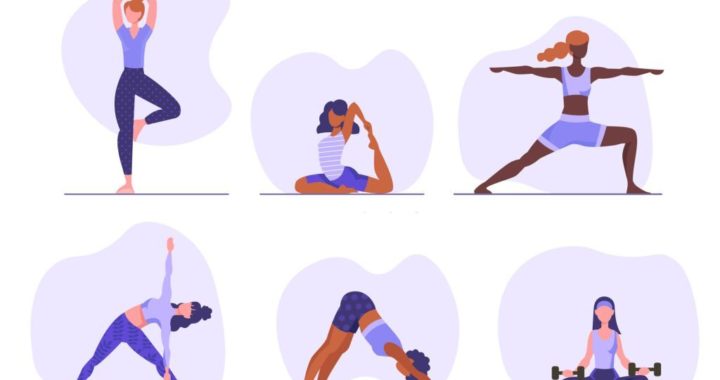Are you an enthusiast looking to delve into the world of yoga? Yoga is a holistic practice that combines physical postures, breathing exercises, meditation, and relaxation techniques. With its origins dating back thousands of years, yoga has evolved into various styles, each with its own unique approach and benefits. In this guide, we will explore different styles of yoga to help you find the one that resonates with you. So, roll out your mat, take a deep breath, and let’s embark on this journey of self-discovery and inner peace.

Explore Different Styles of Yoga
Hatha Yoga: Finding Balance Through Asanas
Hatha yoga is one of the most popular styles and forms the foundation for many other yoga styles. It focuses on physical postures or asanas, combined with breath control exercises. Hatha yoga is suitable for beginners and helps in achieving balance, flexibility, and a sense of inner calm.
To practice Hatha yoga:
- Start by finding a quiet and comfortable space.
- Sit or stand tall, with your spine aligned and shoulders relaxed.
- Take slow and conscious breaths, directing your attention to the rhythm and flow of your breath.
- Start your practice with a series of gentle warm-up exercises to effectively prepare your body.
- Move into various asanas, holding each pose for a few breaths.
- Pay attention to your body’s sensations and avoid pushing yourself too hard.
- Conclude the practice with a relaxation pose or meditation.
Vinyasa Yoga: Flowing with Breath and Movement
Vinyasa yoga, also known as flow yoga, synchronizes movement with breath. It is a dynamic and fluid practice that emphasizes smooth transitions between poses. Vinyasa yoga builds strength, increases cardiovascular endurance, and promotes mindfulness through continuous movement.
To practice Vinyasa yoga:
- Start in a comfortable standing position.
- focus on your breath, inhaling and exhaling deeply.
- Begin with a gentle warm-up, such as Sun Salutations, to awaken the body.
- Flow through a sequence of poses, linking each movement with your breath.
- Maintain a steady and smooth rhythm as you transition from one pose to another.
- Pay attention to proper alignment and engage your core muscles for stability.
- Modify poses or take breaks as needed to honor your body’s limitations.
- End the practice with a few minutes of relaxation or Savasana, allowing your body and mind to integrate the benefits of the practice.
Ashtanga Yoga: The Dynamic and Energizing Practice
Ashtanga yoga is a rigorous and physically demanding practice that follows a specific sequence of postures. It focuses on synchronized breath and movement, resulting in a moving meditation. Ashtanga yoga builds strength, flexibility, and endurance while purifying the body and calming the mind.
To practice Ashtanga yoga:
- Familiarize yourself with the Primary Series, which consists of a set sequence of poses.
- Begin with Sun Salutations to warm up the body.
- Progress through the standing, seated, and finishing poses in a continuous flow.
- Maintain a steady and rhythmic breath throughout the practice.
- As you advance, you can explore the Intermediate Series and further variations.
- Seek guidance from a qualified Ashtanga yoga teacher to ensure proper alignment and progression.
Kundalini Yoga: Awakening the Life Force Within
Kundalini yoga is a spiritual and energizing practice that aims to awaken the dormant energy at the base of the spine. It incorporates dynamic movements, breathing techniques, chanting, and meditation to unleash the flow of Kundalini energy. Kundalini yoga enhances vitality, promotes self-awareness, and expands consciousness.
To practice Kundalini yoga:
- Create a sacred space for your practice, with minimal distractions.
- Begin with warm-up exercises and stretches to prepare the body.
- Engage in specific breathwork, known as pranayama, to activate the life force energy.
- Follow a sequence of dynamic movements called kriyas, which combine asanas, breathwork, and chanting.
- Practice meditation, focusing on specific mantras or visualizations.
- Conclude with relaxation and integration, allowing the energy to settle.
Bikram Yoga: Perspiring in a Warm and Invigorating Environment
Bikram yoga, also known as hot yoga, takes place in a heated room with temperatures reaching up to 40 degrees Celsius. This style of yoga consists of a fixed sequence of 26 postures and two breathing exercises. The heat increases circulation, improves flexibility, and facilitates detoxification through sweat.
To practice Bikram yoga:
- Find a specialized Bikram yoga studio that offers the appropriate heated environment.
- Prepare yourself by hydrating well before the practice.
- Begin with deep breathing and a brief warm-up.
- Move through the sequence of 26 postures and two breathing exercises, following the guidance of a certified Bikram yoga instructor.
- Take breaks and modifications as needed, listening to your body’s signals.
- Stay well-hydrated throughout the practice to replenish fluids lost through sweat.
Yin Yoga: Embracing Stillness and Surrender
Yin yoga is a gentle and meditative practice that focuses on long-held passive stretches. It targets the connective tissues, such as ligaments and fascia, promoting flexibility and deep relaxation. Yin yoga teaches patience, acceptance, and the art of surrendering to the present moment.
To practice Yin yoga:
- Create a quiet and peaceful space for your practice.
- Begin with a few minutes of centering and deep breathing.
- Choose a Yin yoga pose that targets a specific area of the body.
- Ease into the pose and hold it for an extended period, typically 3 to 5 minutes.
- Focus on relaxing the muscles and allowing gravity to gently deepen the stretch.
- Maintain a steady and relaxed breath throughout the pose.
- Embrace the sensations that arise and observe any thoughts or emotions without judgment.
- Slowly release the pose and transition mindfully to the next one.
- Repeat the process with different poses, targeting different areas of the body.
- Conclude the practice with a few minutes of relaxation or meditation to integrate the benefits.
Iyengar Yoga: Precision and Alignment in Asanas
Iyengar yoga places emphasis on proper alignment and precise execution of asanas. Props like blocks, straps, and bolsters are often used to support and enhance the practice. Through the detailed alignment instructions, Iyengar yoga improves posture, develops strength, and increases body awareness.
To practice Iyengar yoga:
- Set up your practice space with the necessary props, such as blocks, straps, and blankets.
- Begin with a few moments of centering and conscious breathing.
- Pay close attention to the alignment cues provided by an experienced Iyengar yoga teacher.
- Utilize props as needed to support your body and maintain proper alignment.
- Move mindfully into each pose, focusing on precision and maintaining steady breath.
- Stay in each pose for a moderate duration, exploring the subtleties of alignment and sensations.
- Conclude the practice with relaxation and reflection, integrating the benefits of the practice.
Restorative Yoga: Nurturing the Body and Mind
Restorative yoga is a gentle and soothing practice that focuses on relaxation and rejuvenation. It utilizes props to support the body in comfortable and restful positions, allowing for deep rest and healing. Restorative yoga reduces stress, promotes deep relaxation, and nurtures the body-mind connection.
To practice Restorative yoga:
- Create a cozy and calming environment for your practice, dimming the lights and using soft props such as bolsters, blankets, and eye pillows.
- Begin with a few minutes of centering and conscious breathing.
- Settle into a supported pose using props to create comfort and relaxation.
- Allow your body to surrender into the support of the props, releasing any tension or effort.
- Stay in each pose for an extended duration, typically 5 to 20 minutes.
- Focus on slow, deep breaths and invite a sense of surrender and letting go.
- Conclude the practice with a few minutes of gentle movement or seated meditation, acknowledging the nourishment received from the practice.
Power Yoga: Strength and Flexibility Combined
Power yoga is a dynamic and athletic style that combines elements of traditional yoga with strength training exercises. It focuses on building both physical and mental stamina, promoting muscle tone, flexibility, and cardiovascular fitness. Power yoga is ideal for those seeking a challenging and energetic practice.
To practice Power yoga:
- Begin with a warm-up to prepare the body for the dynamic movements.
- Flow through a series of poses, incorporating strength-building exercises such as planks, lunges, and core work.
- Maintain a steady and consistent breath throughout the practice, synchronizing movement with breath.
- Embrace the intensity of the practice while listening to your body’s limits and taking breaks as needed.
- Challenge yourself to explore new variations and progressions in your practice.
- Conclude with a cool-down period and a few minutes of relaxation or Savasana.
AcroYoga: Trust, Connection, and Playfulness
AcroYoga blends yoga, acrobatics, and Thai massage, creating a playful and collaborative practice. It involves partner work, where one person serves as the base while the other performs acrobatic movements in the air. Begin with a warm-up to prepare your body for the physical demands of AcroYoga.
Establish clear communication and trust with your partner before attempting any acrobatic movements.
- Start with foundational poses such as the “Bird” or “Front Plank” to build strength and stability.
- Progress to more advanced poses and transitions as you and your partner gain confidence and skill.
- Ensure that you prioritize maintaining correct alignment and activating your core muscles to ensure stability.
- Practice spotting techniques to ensure safety and prevent any accidental falls.
- Embrace the sense of playfulness and connection with your partner throughout the practice.
- Conclude the session with a cool-down and gratitude for the shared experience.
Prenatal Yoga: Nurturing the Mother-To-Be
Prenatal yoga is specifically designed for expectant mothers to support their physical and emotional well-being during pregnancy. It incorporates gentle stretches, modified poses, and breathing techniques to alleviate discomfort, reduce stress, and promote relaxation.
To practice Prenatal yoga:
- It is important to seek guidance from your healthcare provider prior to commencing any exercise program during pregnancy.
- Find a qualified prenatal yoga instructor or follow specialized prenatal yoga videos.
- Focus on gentle stretching and poses that are safe for pregnancy, avoiding any strenuous movements or lying flat on your back.
- Modify poses as your pregnancy progresses and listen to your body’s needs.
- Engage in deep, mindful breathing to calm the mind and connect with your baby.
- Practice pelvic floor exercises to maintain strength and prepare for childbirth.
- Conclude each session with relaxation and visualization techniques to create a peaceful and nurturing space for you and your baby.
Yoga for Kids: Fostering Mindfulness and Imagination
Yoga for kids is a fun and interactive practice that introduces children to the benefits of yoga. It promotes physical fitness, body awareness, concentration, and emotional well-being. Through playful poses, storytelling, and games, yoga for kids fosters mindfulness and imagination.
To practice Yoga for kids:
- Create a child-friendly and safe space for the practice, free from distractions.
- Incorporate storytelling and imaginative themes into the yoga session.
- Demonstrate and guide children through age-appropriate yoga poses, using animal poses and nature-inspired movements.
- Encourage children to express themselves through creative and imaginative play during the practice.
- Incorporate breathing exercises and mindfulness activities to help children develop focus and self-regulation.
- Use props such as colorful mats, yoga cards, or soft toys to make the practice engaging and interactive.
- Conclude the session with a short relaxation or guided visualization, allowing children to experience calm and inner peace.
Chair Yoga: Gentle Practice for Limited Mobility
Chair yoga is a modified form of yoga that can be practiced while seated or using a chair for support. It is suitable for individuals with limited mobility, seniors, or those recovering from injuries. Chair yoga improves flexibility, strength, and overall well-being in a gentle and accessible manner.
To practice Chair yoga:
- Find a sturdy chair without wheels, preferably with a straight back and no armrests.
- Assume a seated position, ensuring that both feet are firmly planted on the ground, spaced apart at hip-width distance, and maintaining an upright and elongated spine.
- Begin with gentle warm-up exercises, such as shoulder rolls and neck stretches.
- Move through a series of seated poses, focusing on proper alignment and engaging the core muscles.
- Use the chair for support in balancing poses or for modifications in standing poses.
- Pay attention to your breath and practice mindful awareness throughout the session.
- Conclude with a few minutes of relaxation and gratitude for your practice.
In conclusion,
Exploring different styles of yoga opens up a world of possibilities for enthusiasts. Each style brings its own unique approach, benefits, and philosophy. Whether you’re looking for a physically challenging practice, a gentle and restorative experience, a spiritual journey, or a playful and interactive session, there’s a yoga style that can cater to your needs.
FAQs (Frequently Asked Questions)
- Can I practice more than one style of yoga?
Absolutely! Many yogis enjoy exploring multiple styles and incorporating different practices into their routine. It allows for a well-rounded experience and keeps the practice fresh and engaging. - Is yoga suitable for everyone, regardless of age or fitness level?
Yes, yoga is adaptable and can be modified to suit individuals of all ages and fitness levels. There are styles and classes specifically designed for seniors, pregnant women, and those with limited mobility or injuries. - How often should I practice yoga?
How often you practice yoga will vary based on your individual objectives and availability. Consistency is key, so aim for a regular practice that works for you, whether it’s a few times a week or daily. Even a short practice can have significant benefits. - Can yoga be practiced at home?
Absolutely! Many resources, such as online classes and yoga apps, offer guidance for home practice. However, if you’re new to yoga, it’s recommended to seek guidance from a qualified teacher to ensure proper alignment and technique.

